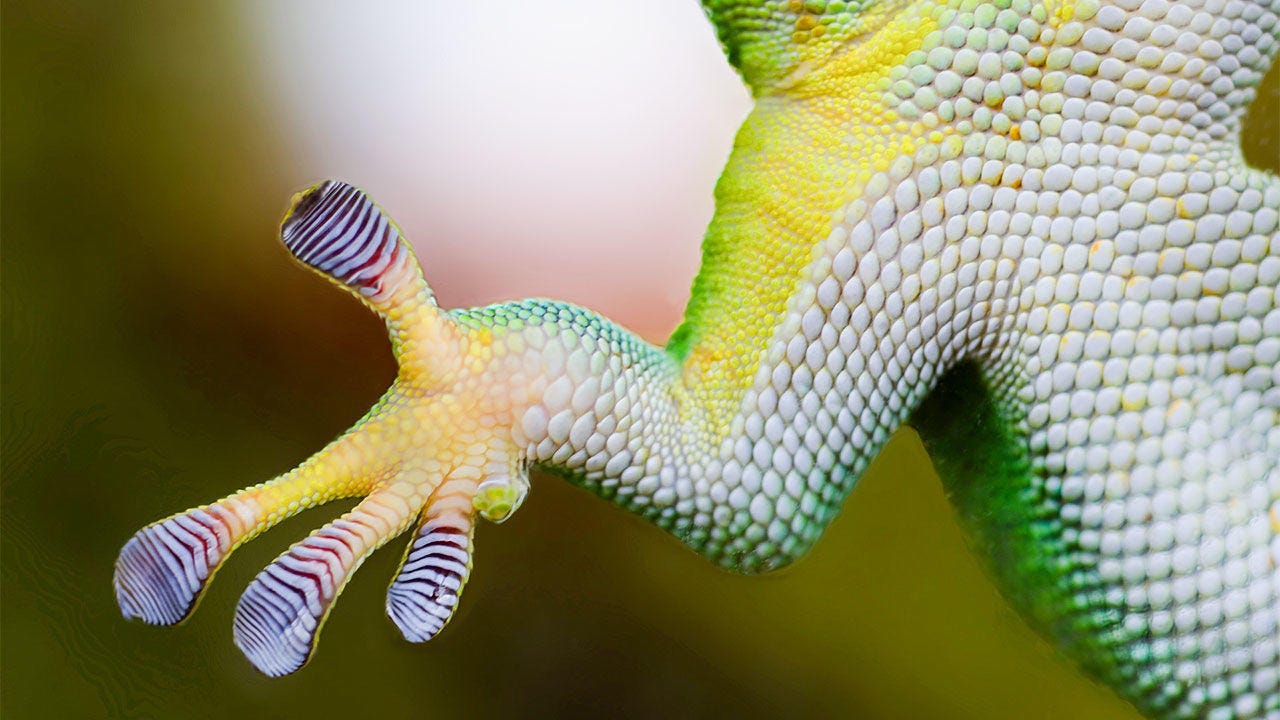Gecko Gripper utilizing NASA-created tech launches commercially


A robotic gripper inspired by the adhesive properties of gecko hands will soon be adorning robots around the world. We've written about OnRobot's Gecko Gripper before, but its commercial availability this year highlights the growing competition and dazzling science coming out of the niche market for "robot hands."
The Gecko Gripper uses millions of "micro-scaled fibrillar stalks," which stick to smooth surfaces using van der Waals forces, which is the mechanism geckos use to climb. The gripper grew out of a Stanford research project that inspired work at the NASA Jet Propulsion Lab. NASA was exploring van der Waals forces as an effective way to capture orbiting satellites for salvage or repair. Suction cups and vacuum grippers aren't effective in space, and traditional robotic end effectors can push objects away in zero gravity.
The Gecko Gripper quickly captured attention outside the space community as a possible pick-and-place tool for robots.
"The market reaction to the Gecko Gripper has been extremely positive," says Kristian Hulgard, OnRobot's General Manager for Americas. "We see the gripper now challenging traditional application and material handling design in a wide range of delicate tasks such as picking up porous and fragile objects like PCB boards."
Because it relies on intermolecular forces as opposed to friction to grasp objects, it allows robots to pick up flat, smooth items, currently the domain of vacuum grippers. But vacuum systems, which rely on compressed air, are energy and cost-intensive to operate.
Electrostatic grippers, which also rely on intermolecular forces, are effective for small items like sheets of film or fabric, but they require high voltage systems to operate and are fairly weak compared to the adhesive property of the Gecko Gripper.
Some of the most interesting innovation in industrial robotics over the past couple years has occurred in the end effector space -- the hands robots use to interact with the world. Specifically, new and starkly contrasting technologies are emerging that could dictate how small industrial robots, the ones that power fulfillment centers and light manufacturing, pick things up for generations to come.
Broadly speaking, there are two predominant camps: Companies that rely on sophisticated grasping strategies rooted in machine vision & machine learning, and companies advocating simpler systems that use materials science to create "dumb" grippers that can compensate for a variety of objects. (Dumb, it should be noted, signifies a reduced reliance on computational power.)
Presently, industrial robots often require custom tooling, limiting market growth. A new generation of cheap, broadly applicable end effectors could change that.